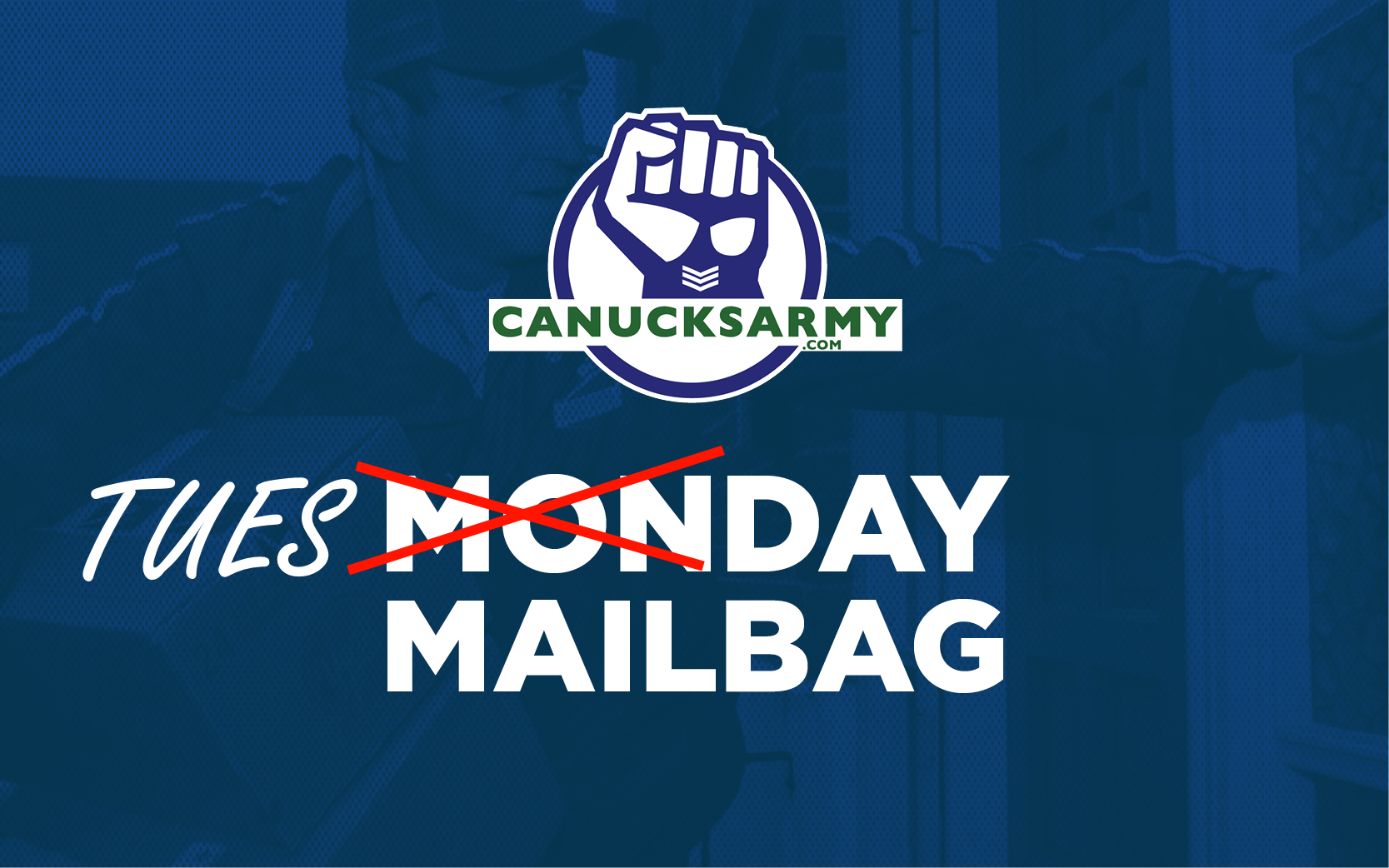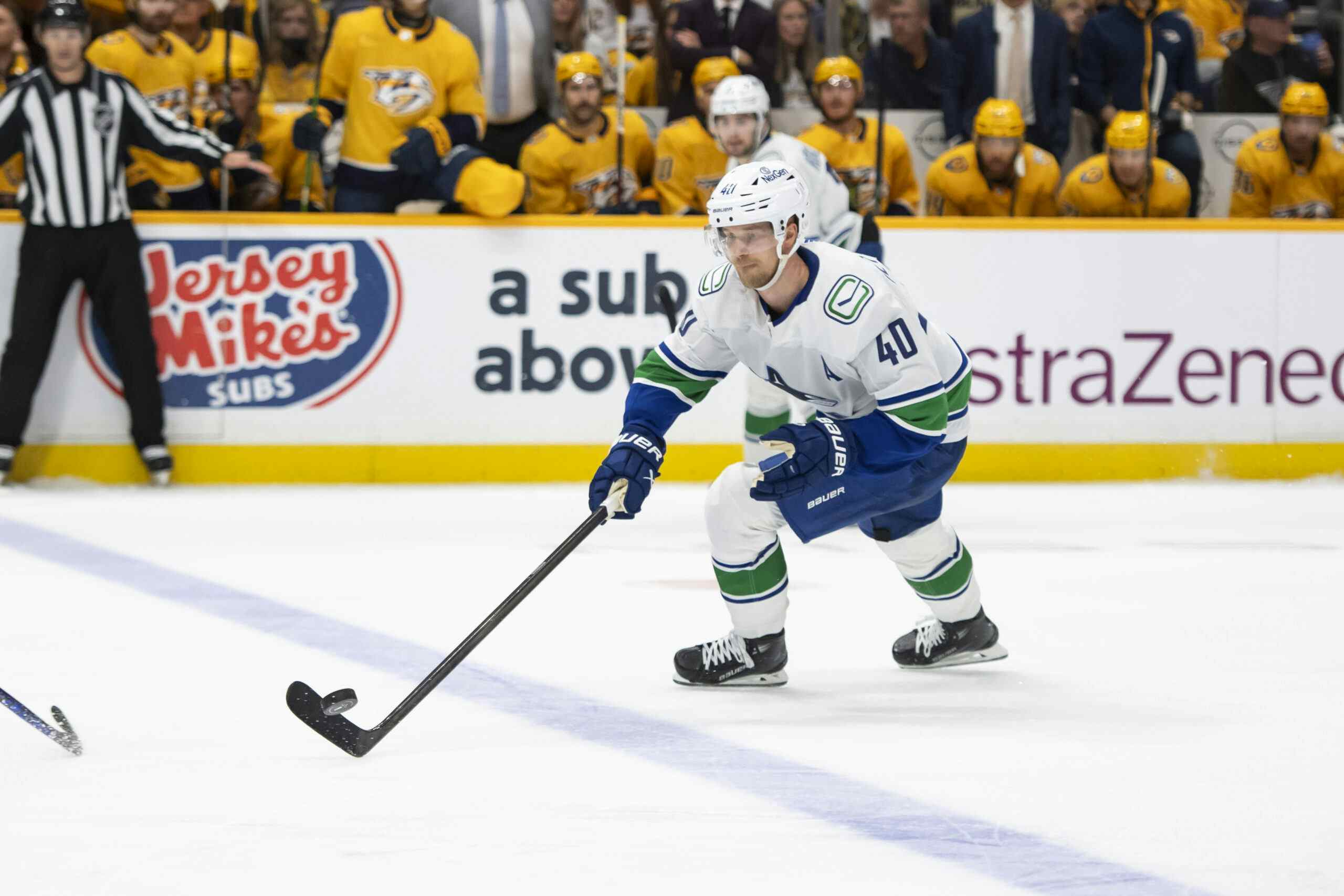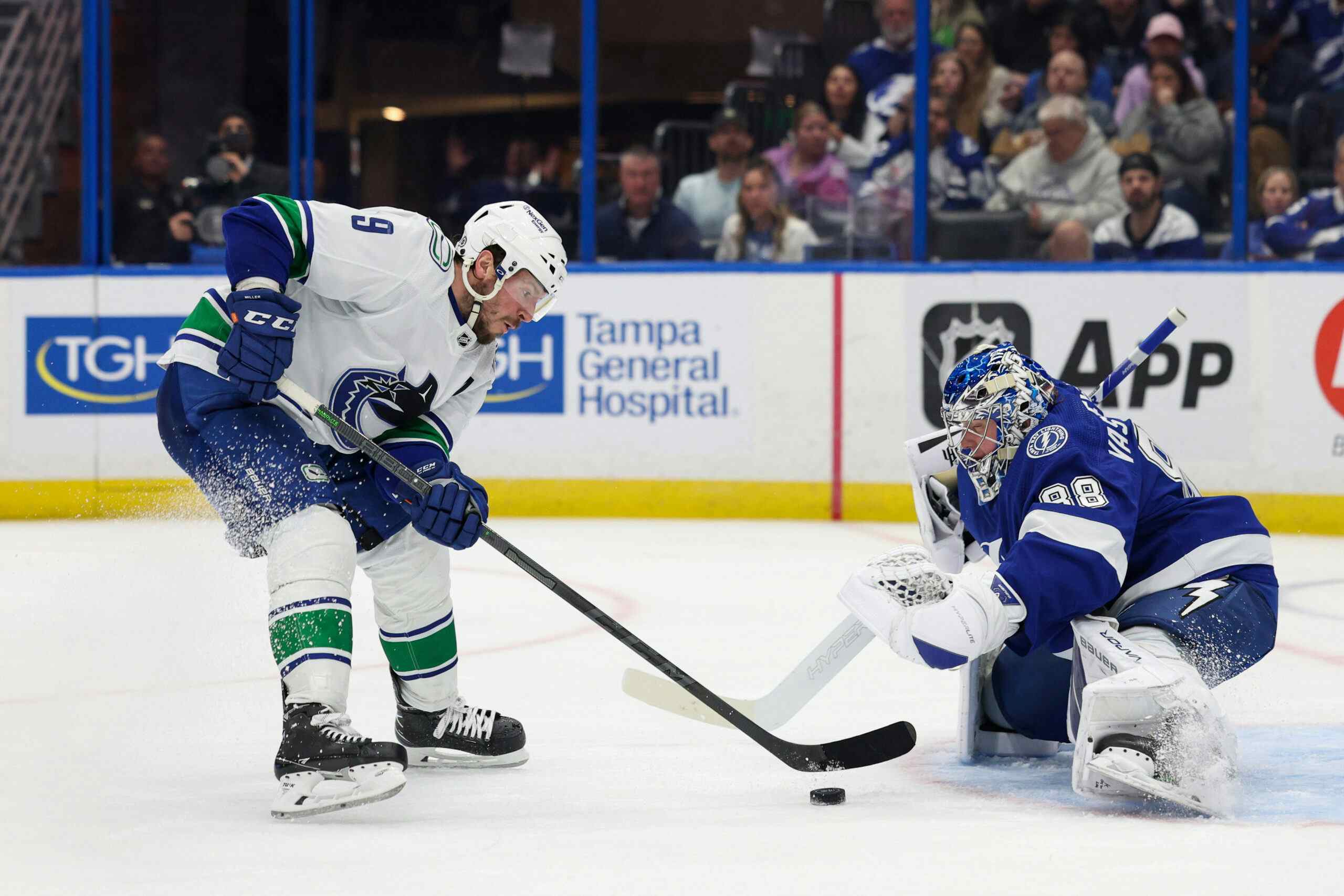Philip Larsen is Adequate
By J.D. Burke
7 years ago
Photo Credit: Anne-Marie Sorvin – USA TODAY Sports
Philip Larsen has been a lightning rod for criticism since returning to the Canucks‘ lineup from a December 8th concussion. He’s found himself on the ugly end of many a broken play, and an alarming number of those have found their way to the back of his net. It’s been an ugly reunion.
Now questions abound about whether Larsen has what it takes to remain a fixture on the Canucks back end as they enter the most critical stretch of their season. Depending on who you ask, the skepticism runs so deep as to bring into question whether he’s even an NHL defenceman in any capacity.
I’m of a different mind, though. Larsen’s had a rough few games, but nothing so disastrous that I’m shaken from my conviction that he’s a genuinely fine and useful third pair defenceman. An imperfect one, sure. But he’s not alone in that regard — certainly not on the Canucks blue line.
What Larsen Isn’t
When the Canucks acquired Larsen’s rights from the Edmonton Oilers for a fifth-round selection in this year’s draft, they did so on the premise he would run the power play and help provide offence from the back end. They used their assessment of his time in the KHL as proof positive to some sort of offensive dynamism that lay dormant during his first stay in the NHL.
The English version of the Kontinental Hockey League website doesn’t offer power play and even strength splits by points or assists, but I was able to glean only four of his eleven goals came with the man-advantage last season. That’s four more than he had the season prior and one more than he produced in 125 NHL games before that. It’s not like he was ever an especially proficient power play producer in the KHL or any other league.
Rightly or wrongly, the Canucks’ verbiage set the market up with the belief that Larsen’s calling card was as a power play quarterback, and a damn good one at that.
The Canucks power play hasn’t improved and given the extent to which they run (or rather, ran) it through Larsen, he’s become the poster boy for its failure. It was his job to fix it, after all. If you were to judge Larsen with this as your first piece of information, you would naturally be disappointed.
To some extent, this plays on the Anchoring Heuristic. Essentially, that cognitive failing describes people’s overreliance on the first piece of information made available to them as a sole determining factor in how they perceive something going forward — an anchor, of sorts. The first piece of information the Canucks delivered on Larsen is that he’s an offensive defenceman that can anchor a power play. Whether we know it or not, we’re psychologically predisposed to view and judge him accordingly through that lens.
Interestingly enough, I don’t even think Larsen’s been the worst defenceman on the Canucks power play. Not even close. I tend to think he transitions play into the opposition zone reasonably well, and that skill shouldn’t be lost on Canucks fans given how much the team struggles in that regard whenever Alexander Edler is forced to miss time with an injury.
By the readily available metrics, you’ll be surprised to find where Larsen ranks among Canucks player with 25 or more minutes on the power play.
| Points/60 | Corsi For 60 | Corsi For Rel. Team 60 | Fenwick For 60 | Fenwick For Rel. Team 60 | |
| Philip Larsen | 1.16 (11th) | 95.41 (4th) | 9.03 (1st) | 69.81 (4th) | 6.97 (3rd) |
If nothing else, Larsen’s presence on the Canucks power play is helping create an environment for success relative to his teammates. He shouldn’t be forced to wear the unit’s shortcomings.
What Larsen Is
When the Canucks keyed in on Larsen, what should’ve caught their eye was his value in transition. This is an area where Larsen excels. He’s a deft puck mover and surprisingly slippery when opposing forecheckers bear in on him. It’s not Larsen’s shot that gives him offensive value so much as his feet and vision.
Larsen can prove difficult to pin down because his head is constantly up looking for the outlet and he knows when to cut bait and cycle the puck to his defensive partner. I’ve also noticed Larsen isn’t shy about making a pass through the centre lane of the defensive zone. When his timing is on, he can make passes through one or two defenders look relatively easy.
All this is to say that Larsen is fairly capable of making difficult plays in transition. He does the little things well, whether by way of exiting his own end or facilitating advancement into the opposition’s, that should auger favourable two-way results over an extended sample.
We’re not there yet though, and I think the constant pendulum swing in Larsen’s underlying metrics is indicative of that. Going into Saturday’s game, Larsen sported a 48.5% Corsi For. By that game’s end, his number dropped to 46.9%. Neither mark is great, but we’re still talking about a 20 game sample. 20 games are considered the bare minimum for making big picture assessments based on underlying shot metrics.
I find the 20 game sample unsatisfying to prove or disprove Larsen as a good or bad defenceman in much the same way many are right to question the viability of Larsen’s high-end showing through an Expected Plus/Minus built largely on a 30 game sample with the Oilers two seasons prior.
Even if we were to assign worth based on this sample, it’s not like Larsen’s shown as incompetent by any stretch of the imagination. He’s one of exactly one defenceman with 90+ minutes with Luca Sbisa to have an above 50% Corsi For — a sample that runs back to Sbisa’s first season as a Canuck.
You’ll also find Larsen’s aggregate impact on his teammates’ ability to control shot attempts is sixth best among defenceman on the Canucks, as his -0.7% CF%Rel Tm ranks him barely behind Chris Tanev and Nikita Tryamkin, and slightly ahead of Erik Gudbranson and Ben Hutton.
Don’t Look Too Much Into Larsen’s Last Few Games
You’d have a hard time finding anyone wont to argue Larsen’s played well these last two or three games since returning from injury. Frankly, he’s played the two worst games of his time as a Canuck. A lot of these errors are new, though. In all likelihood, we’re watching a player struggling to find his timing after he returns from a month-plus absence.
When Jason Botchford posts a .gif of Larsen whiffing on a pass with little-to-no pressure from the Minnesota Wild forechecker Alex Tuch, you’re right to be upset or concerned even. Then again, we know he’s capable of making a simple breakout pass under worse pressure because he did so with great frequency before a severe head injury took him from the lineup.
The same goes for Mikael Granlund’s hat-trick goal, one which only emboldened the notion Larsen is soft and not built to defend the net front. You’re again right to criticize Larsen for those plays, but I wonder about how much longer he’ll make them as he regains his timing and confidence. There’s a fair amount of evidence to suggest he’s surprisingly strong on the puck and in front of the net when opposition ups the pressure.
This particular play shows two great examples of how well Larsen can defend the slot. He singlehandedly uses an active stick to break up Derrick Brassard’s one-time chance, then steals the puck and keys the rush when he goes for seconds.
Here’s another, wherein Larsen boxes out Chris Neil from the front of the net, makes himself available to Alexander Edler as a fail-safe and sends the puck up ice and clear from his zone. Neil is a tough customer, so if Larsen were half as soft as it’s often suggested, I have my doubts about his ability to box him out effectively. Same goes for the following play when he flat-out outmuscles Anders Lee.
The market could very well be succumbing to the availability heuristic when they react to Larsen’s last few gaffs against San Jose and Minnesota. The Availability Heuristic is a tendency to value the most readily or recent information disproportionately because it is foremost in our minds. When we last checked with Larsen, he was whiffing on easy passing plays and losing 50/50 puck battles, so naturally, that’s what we associate with Larsen.
Conclusion
No matter which metric you prefer for defenceman, Larsen’s teams generally fare about as well with him on the ice as off. For a third pair defenceman, that’s about all you can ask. And that’s probably all Larsen is anyways, so mission accomplished.
Larsen isn’t going to turn the Canucks power play into an effective unit. He never could have, though. As a defender at even strength, Larsen is more than adequate. Everything about his time in the league prior to being a Canuck suggests that and I imagine as the sample grows he’ll show as much in the green and blue too.
As Larsen gets more comfortable with the puck and regains his timing, I tend to think the plays that drove the city of Vancouver collectively mad on Saturday will become less frequent, if there at all. And if Larsen plays the same way he did in months one and two as a Canuck, what’s there to complain about?
Recent articles from J.D. Burke





